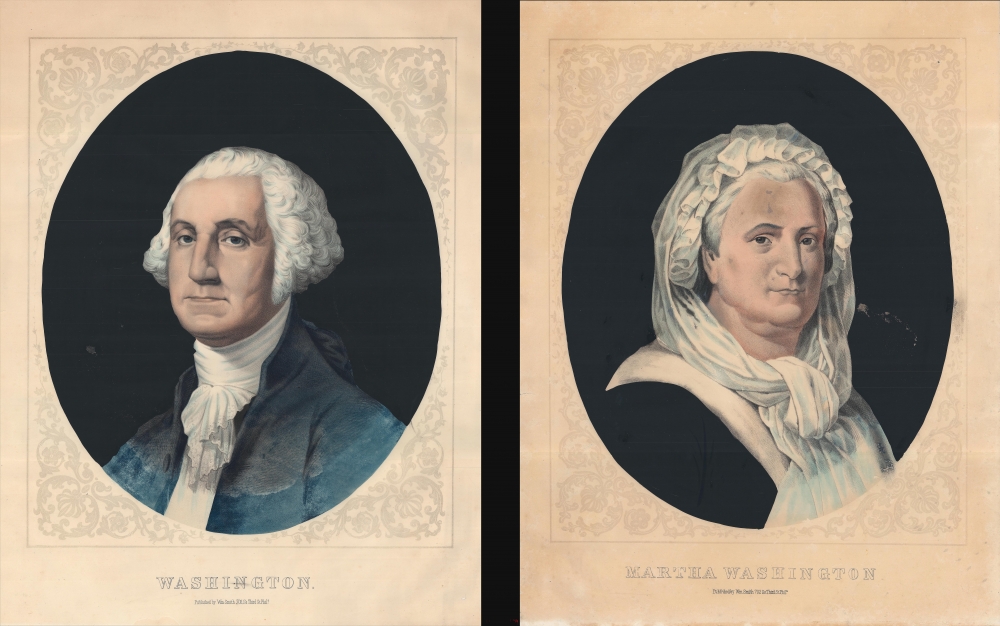1876 Smith Lithographed Portraits of George and Martha Washington
GeorgeandMartha-smithwilliam-1876
Title
1876 (undated) 18 x 23 in (45.72 x 58.42 cm)
Description
A Closer Look
The portraits depict the First Couple late in George Washington's presidency, and are likely based on Gilbert Stuart's 'Athenaeum Portraits' partially completed in 1796, today the most enduring images of George and Martha.In the years following Washington's death, he was lionized, even deified, for relinquishing the presidency, among other virtues, and his reputation as a transcendent figure only grew as the country descended into the American Civil War (1861 - 1865). Both the Union and Confederacy employed Washington as a symbol to bolster their cause, and during Reconstruction, he was promoted as a unifying figure that could help maintain the fragile peace. The Centennial Exposition was especially ripe for such commemorations, and artistic works focusing Washington were prevalent.
Chromolithography
Chromolithography, sometimes called oleography, is a color lithographic technique developed in the mid-19th century. The process involved using multiple lithographic stones, one for each color, to yield a rich composite effect. Oftentimes, the process would start with a black basecoat upon which subsequent colors were layered. Some chromolithographs used 30 or more separate lithographic stones to achieve the desired product. Chromolithograph color could also be effectively blended for even more dramatic results. The process became extremely popular in the late 19th and early 20th centuries when it emerged as the dominant method of color printing. The vivid color chromolithography produced made it exceptionally effective for advertising and propaganda imagery.Publication History and Census
These portraits were printed by William Smith in Philadelphia, part of a series of prints relating to Washington that Smith issued around the same time. They are presumed to be based on Gilbert Stuart's 1796 'Athenaeum portraits' of the couple. The portraits are undated but given the dates which Smith was active and the popularity of such portraits around the time of the Centennial Exposition, they are typically dated to 1876. They are not known to be held in the collections of any institution, and are scarce to the market, especially colored and in such good condition.Cartographer
William Smith (fl. c. 1860 - 1891) was a lithographer active in Philadelphia during the second half of the 19th century. Smith first appears as a picture frame maker beginning in 1856. By 1860, Smith had changed professions and began publishing and distributing genre, historical, religious, and portrait lithographs and chromolithographs from his shop located at 706 South Third Street, which he moved just down the block to 702 South Third Street in 1863. He appears to have been unrelated to the 'Smith Brothers' (Benjamin Franklin Smith and borothers) publishers active in Philadelphia around the same time. More by this mapmaker...






